You’ve reached an old page. If you are not redirected automatically, please follow the link: https://HuLC.nianet.org/About
You’ve reached an old page. If you are not redirected automatically, please follow the link: https://HuLC.nianet.org/About
Note: Each participant must register for the Competition Forum individually (including the faculty advisor).
View the 2025 HuLC Forum Menu.
*This registration form is for teams. NASA guests, please check your email for a link to the NASA Guest & VIP registration form.
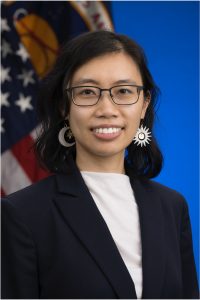 Esther Lee
Esther Lee
2025 Co-Chair, Sponsor
NASA’s Langley Research Center
Esther Lee earned her B.S. and M.S. degrees in Mechanical & Aerospace Engineering from Rutgers University and University of California, Davis. She began her career at NASA’s Langley Research Center in 2014. Her contributions span a diverse range of space exploration projects, including the Space Launch System, Human Research Program, and Human Lander System. She emphasizes a systems thinking approach in her work, considering the broader implications and interdependencies within complex projects while leveraging her knowledge in flight mechanics, aerothermodynamics, and model-based systems engineering. Drawing on her experience as former team lead of the navigation sensors technology assessment team and her current role as Proposal Manager, Esther is dedicated to fostering innovation and informed decision-making in technologies that advance space exploration and improve life on Earth. Beyond her professional endeavors, she enjoys exploring her creativity through art, gardening, and engaging in STEM outreach. She is excited to witness the ingenuity and talent of the HuLC students.
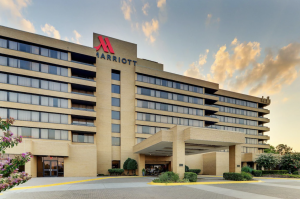
Note: If an error occurs when trying to reserve a hotel room through the link below, delete your browser’s cache before booking.
Single King/Double Queen Room : $134/Night
Cancellation Policy: 72 Hours Prior to Check-In
__________________________________________________
Huntsville Marriott at the Space & Rocket Center does not offer transportation service to/from Huntsville International Airport (HSV).
Huntsville Marriott at the Space & Rocket Center is located about 10 miles away from Huntsville International Airport (HSV).
On-site Forum Information: We are excited to see you in-person for the HuLC Forum! As a reminder, there is no virtual option to participate in the Forum, and it is closed to the public. We ask that you instead invite your friends and family to watch your presentation via the Vimeo Livestream.
 Monica Guzik
Monica Guzik
NASA’s Glenn Research Center
Monica Guzik is the Chief Engineer of the Gateway Power and Propulsion Element (PPE) at the NASA Glenn Research Center (GRC) in Cleveland, Ohio. She is a graduate of Rose-Hulman Institute of Technology with a B.S. in Chemical Engineering and a minor in German Language. Prior to her role on PPE, Monica served a 14-month detail within the Office of the Chief Engineer at NASA Headquarters as the Space Technology Mission Directorate (STMD) Deputy Chief Engineer. She has also served as the Chief Engineer for the Fission Surface Power project, the Hybrid Thermally Efficient Core (HyTEC) project, and the Flow Boiling and Condensation Experiment (FBCE) for the International Space Station. Prior to joining the Chief Engineer’s office, Monica had over ten years of experience in the Fluids and Cryogenics Systems branch at GRC, where she focused on in-space cryogenic fluid management and fuel cell power systems. Monica is currently a deputy on the NASA Engineering and Safety Center’s Cryogenics Technical Discipline Team. She was honored by the Agency with the NASA Silver Snoopy Award in 2022 for her work on FBCE, as well as the Early Career Achievement Medal in 2016 and the Silver Achievement Medal in 2017. In her free time, she enjoys participating in community STEM outreach, playing soccer, traveling, visiting theme parks, and enjoying Cleveland’s extensive music scene.
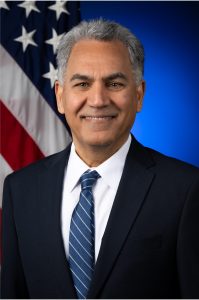 Jamshid Samareh
Jamshid Samareh
Retired, NASA’s Langley Research Center
Jamshid Samareh retired from NASA’s Langley Research Center in late 2024. He was formerly a senior research aerospace engineer in the Vehicle Analysis Branch of NASA’s Langley Research Center. His research interests are in Entry, Descent, and Landing (EDL), mass modeling, multidisciplinary analysis and design optimization (MDAO), fluid-structure interaction, geometry modeling, and shape optimization.
 Wesley Chambers
Wesley Chambers
NASA’s Marshall Space Flight Center
Dr. Wesley Chambers is a physicist working at NASA’s Marshall Space Flight Center. His research interests include planetary surface environments and the gas-granular physics of rocket plume-surface interactions. He is Deputy Principal Investigator for the Plume-Surface Interaction Project, Principal Technologist for Stereo Cameras for Lunar Plume Surface Studies (SCALPSS), a plume-surface interaction flight instrument, and a member of the Human Landing System Natural Environments team. Wesley earned an A.A. from Seminole State College of Florida and a B.S. and Ph.D. from the University of Central Florida.
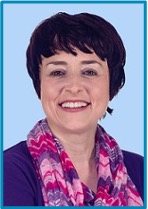 Lora Dishongh
Lora Dishongh
Booz Allen Hamilton
Born and raised in rural Indiana, Lora Dishongh was invited to the University of Houston as a National Merit Scholar. She earned a Bachelor of Science in Mechanical Engineering, Summa Cum Laude, before joining the US Navy to serve as an instructor at the Naval Nuclear Power Training Command. After one tour of duty, she returned to the Houston area to pursue a career at the Johnson Space Center. Lora has worked in various project and systems engineering roles in the twenty years since. She has built hardware for biological monitoring and exercise activities aboard the International Space Station, written test requirements and performed integration activities for the Orion Multi-Purpose Crew Vehicle, and led teams of various sizes with far-flung membership. Lora currently works for Booz Allen Hamilton, and serves NASA’s Lunar Architecture Team as the Artemis IV Surface Planning Analysis Lead and curator of the publicly-released Lunar Surface Data Book.
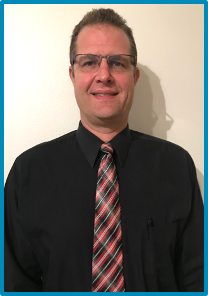 Mark Lewis
Mark Lewis
NASA’s Kennedy Space Center
Mark Lewis received a B.S. in Electrical Engineering from Cleveland State University. Mr. Lewis is a systems engineer at NASA Kennedy Space Center (KSC) and has over 30 years of experience at NASA working on numerous research and spaceflight projects at Glenn Research Center (GRC) and at KSC. He has research experience in the development of damage detection and health management systems, and various types of gas sensors for use in launch system operations, spaceflight experiments, and biomedical applications. His flight hardware development experience includes satellite servicing and microgravity physical science experiments. Mr. Lewis is listed as an inventor on seven patents and received the NASA Silver Achievement Medal in 2018.
 Manish Mehta
Manish Mehta
NASA’s Marshall Space Flight Center
Dr. Manish Mehta is a subject matter expert within the Aerosciences Branch at NASA’s Marshall Space Flight Center in Huntsville, Alabama. His main area of focus is aerothermodynamics, base aerodynamics and gas-granular flow physics and has been working in these disciplines for the last 20 years. Dr. Mehta has worked multiple technical disciplines within aerosciences for the Space Launch System (SLS) Program and currently is the induced environment disciple lead engineer for the Human Landing System (HLS) Program. He received his doctorate in engineering from the University of Michigan in 2010.
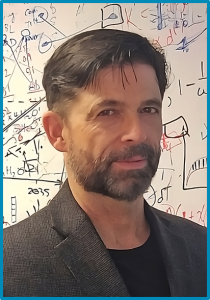 Philip Metzger
Philip Metzger
University of Central Florida
Dr. Philip Metzger is a planetary scientist and the director of the Stephen W. Hawking Center for Microgravity Research and Education at the University of Central Florida. He worked at NASA’s Kennedy Space Center for about 30 years, where he co-founded the KSC Swamp Works. He performs research related to solar system exploration: lunar mining, soil mechanics, rocket exhaust interactions with planetary surfaces, etc. He received the astronaut’s Silver Snoopy award in 2010, was selected as the Kennedy Space Center’s NASA Scientist/Engineer of the Year for 2011, received the ASCE Aerospace Division’s Outstanding Technical Contribution Award for 2016, and became a NASA NIAC Fellow in 2020. In 2021, The International Astronomical Union (IAU) named asteroid 36329 Philmetzger (2000 LU35) after him, citing his research into rocket exhaust blowing soil and efforts to protect the Apollo heritage sites from those effects.
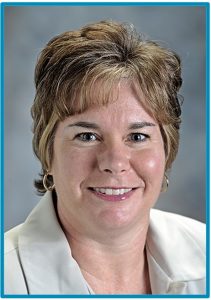 Michelle Munk
Michelle Munk
NASA’s Langley Research Center
Michelle Munk has been serving as the Chief Architect within NASA’s Space Technology Mission Directorate (STMD) since May 2022. In this role, Mrs. Munk is responsible for creating technology infusion paths to science and human exploration missions, and commercial industry. She works with NASA’s System Capability Leads and STMD Principal Technologists to identify gaps and investment strategies, and to prioritize investments across STMD’s capability areas. Mrs. Munk has over 30 years of experience in Entry, Descent and Landing flight hardware development and technology management from four different NASA centers. Mrs. Munk holds a B.S. in Aerospace Engineering from Virginia Tech and is an AIAA Associate Fellow.
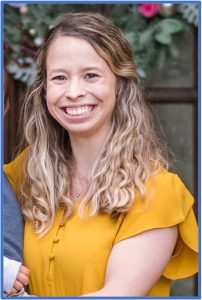 Samantha Harris
Samantha Harris
NASA’s Marshall Space Flight Center
Samantha “Sam” Harris spent her childhood in Cincinnati, Ohio before moving to Alabama to pursue an undergraduate degree in Industrial and Systems engineering at the University of Alabama in Huntsville. As an undergrad, she happened upon a Pathways Internship with NASA Marshall Space Flight Center that eventually led to her first job chatting with astronauts aboard the International Space Station. While working various roles in flight control and ground team training for the ISS program, she earned a Master’s degree in Engineering Management. Since leaving the ISS program, she has served in project management functions for a variety of space technology development projects including green propulsion, deployable in-space power generation, Cryogenic Fluid Management and Plume Surface Interaction.
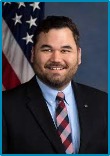 Matt Simon
Matt Simon
NASA’s Langley Research Center
Dr. Matthew Simon currently serves as the Capabilities Integration Lead within the Exploration Systems Development Mission Directorate (ESDMD), where he supports ongoing NASA work to define technology needs for human lunar and Mars exploration missions. In addition to these roles, Dr. Simon has supported multiple other NASA projects on spacecraft design, habitation, medical capability development, radiation shelter design, strategic decision analysis, and technology portfolio characterization. He has an interest in progressing towards human settlement of space through the development of innovative concepts with large potential to enable future human exploration missions and improve the quality of life here on Earth. He received his Ph. D. in Aerospace Engineering from Georgia Tech in May 2016 with his thesis on automated spacecraft interior layout evaluation and design.
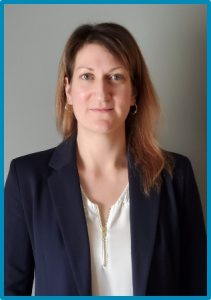 Ashley Korzun
Ashley Korzun
NASA’s Langley Research Center
Dr. Ashley Korzun is an Aerospace Engineer at NASA Langley Research Center and Principal Investigator for NASA’s Plume‐Surface Interaction ground testing and capability development. Her primary specialization is in entry, descent, and landing aerosciences and systems, with an emphasis on technology development for propulsive descent and landing on the Earth, Moon, and Mars. Dr. Korzun has served as the Aerodynamics Lead for the successful InSight Mars lander mission and the LOFTID technology demonstration mission. She holds a B.S. in Aerospace Engineering from the University of Maryland and a M.S. and Ph.D. in Aerospace Engineering from Georgia Tech.
 Juan Valenzuela
Juan Valenzuela
NASA’s Marshall Space Flight Center
Juan Valenzuela received his B.S and M.S in Mechanical Engineering from the University of Texas at El Paso. He has been an aerospace engineer for NASA since 2012. During his 12 years at NASA, he has served as vacuum chamber test engineer, cryogenic fluids analyst and cryogenic fluid management product lead, responsible for the technology development of in-space cryogenic hardware. He currently serves as the Human Landing Systems (HLS) main propulsion systems (MPS) sub-system lead, responsible for overseeing insight on non-main engine propulsion systems of the next lunar landers.
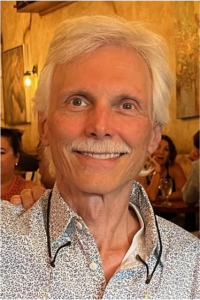 Mark Wollen
Mark Wollen
Innovative Engineering Solutions
Mark Wollen graduated from CWRU with MS/BS degrees in Mechanical and Aerospace Engineering in 1980/82. After an early period at General Dynamics in San Diego, working Atlas/Centaur evolution, National Aero Space Plane (NASP), and other advanced space programs, he went on to co-found Innovative Engineering Solutions (currently serving as the Chief Technical Officer), and has spent most of his career working as a consultant on cryogenic propellant management techniques for space launch vehicles. Recognized areas of expertise include: cryogenics and low/zero gravity fluid mechanics, free surface flows, propellant tank thermodynamics, cryogenic propulsion systems, and testing techniques and specialized instrumentation for these topics. Over the last 40+ years Mr. Wollen has contributed to various design and development activities for most of the liquid propellant launch vehicle systems currently in use in the United States.
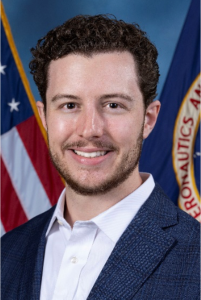 Reid Ruggles
Reid Ruggles
NASA’s Marshall Space Flight Center
Reid Ruggles is the NASA HLS Propulsion Discipline Lead Engineer, leading the NASA propulsion engineering team in evaluating both SpaceX’s HLS Starship and Blue Origin’s Blue Moon propulsion system designs and procedures to safely land the next American astronauts on the lunar surface and establish a sustained presence on the Moon. The HLS Propulsion Team includes main engines, main propulsion systems / cryogenic fluid management, reaction and attitude control systems, gas storage and generation systems, and all supporting lines, valves, and other components. Reid received his B.S. in Aerospace Engineering from The University of Alabama and his M.S. in Aerospace Engineering from Georgia Tech. Prior to joining the HLS team in 2022, Reid supported NASA’s Commercial Crew Program as a Main Propulsion Systems Engineer for Falcon 9 and Atlas V and served as the CCP Deputy Lead Engineer for Falcon 9. He directly supported the return of human launch capability to the United States with SpaceX’s DM-2 mission, as well as certification, maintenance, and flight operations of reused Falcon 9 first stage boosters starting with the Crew-2 mission.
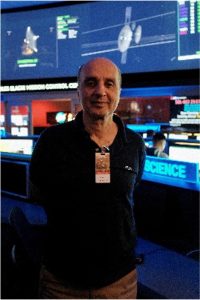 Ali Kashani
Ali Kashani
MEI Company
Dr. Ali Kashani has over 40 years of experience in thermal sciences. His work includes research and development of reduced and zero boil-off propellant systems, pulse tube cryocoolers, low-temperature regenerators, magnetic and helium dilution refrigerators. He is currently supporting the development of cryogenic technologies for NASA’s Human Landing Systems. He has worked on several NASA flight projects: Starling, VIPER, SHOOT, GP-B, SOFIA, BioSentinel, Astrobee, and Astro-H. He is a member of NASA Engineering & Safety Center Technical Discipline Team for cryogenics!
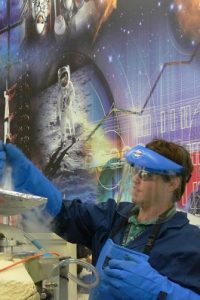 Wesley Johnson
Wesley Johnson
NASA’s Glenn Research Center
Wesley Johnson received a bachelor’s degree in aerospace engineering from Auburn University in 2007 and a master’s degree from the University of Central Florida in 2010. Mr. Johnson began his career at NASA Kennedy Space Center as a Cooperative Education Student in 2004 working in the Cryogenics Test Laboratory where he spent over nine years developing advanced cryogenic technologies as well as trouble shooting problems on the Space Shuttle. He moved to NASA Glenn Research Center in 2014 to continue his research in cryogenic fluid management where he is the Cryogenics Team Lead in the Fluid and Cryogenic Systems Branch. His current research interests include thermal characterization of insulations as systems as well as collaboration with multiple projects focusing on cryogenic fluid system design, analysis, and testing. He was the Principle Investigator for the large scale liquid hydrogen testing effort: the Structural Heat Intercept, Insulation, and Vibration Evaluation Rig (SHIIVER) and the oxygen liquefaction demonstration Cryogenic Fluid In-situ Liquefaction for Landers (CryoFILL).
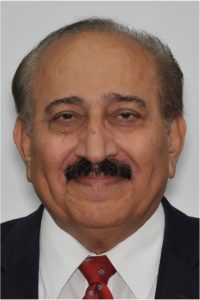 Ali Hedayat
Ali Hedayat
NASA’s Marshall Space Flight Center
Ali Hedayat has over 34 years of experience of governmental and industrial experience in development of thermal/fluid modeling, design, and testing of propulsion systems. He Joined NASA Marshall Space Flight Center in 2002. He is the Lead for the In-Space Propulsion Systems Modeling Team in the Spacecraft and Vehicle Propulsion Branch at NASA MSFC. He has provided technical leadership, guidance, and mentoring to the team members on development of new technology and analysis tools for in-house and Industry projects. His areas of interest include thermal/fluid modeling of cryogenic fluid management and main propulsion systems. He received his Ph.D. in Mechanical Engineering from the University of Tennessee.
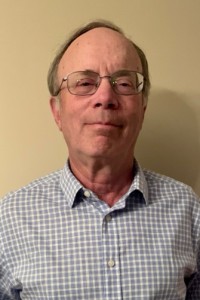 Michael Dipirro
Michael Dipirro
NASA’s Goddard Space Flight Center
Michael Dipirro joined NASA/ Goddard Space Flight Center in 1980 after receiving a PhD in Low Temperature Physics and serving one year as a post-doc at NIST in Gaithersburg. He has worked on a number of NASA’s cryogenic astrophysics missions including the Cosmic Background Explorer (1980-1990), Spitzer Space Telescope (1985-2003), and James Webb Space Telescope (2006-2021). In between he was the Principal Investigator for the Superfluid Helium On-Orbit Transfer Flight Demonstration (1984-1993) which successfully demonstrated the microgravity transfer of liquid helium in the superfluid state. He also has several patents on low temperature technology as well as over 100 published papers on the subject.
NOTE: Participants must abide by the COVID Policy in place at the time of the event.
In accordance with guidance and metrics from the Centers for Disease Control and Prevention (CDC), as well as revised policies of the National Institute of Aerospace and NASA, the following COVID-19 Policy is in effect for the 2024 HuLC Competition Forum for all attendees, as of April 5, 2022:
This policy and requirements are subject to change at any time leading up to the Forum. Participants will be made aware of any changes to this policy. It is every participant’s responsibility to remain apprised of the policy and any changes prior to arrival in Huntsville, AL.
Huntsville Marriott at the Space & Rocket Center does not offer transportation service to/from Huntsville International Airport (HSV).
Huntsville Marriott at the Space & Rocket Center is located about 10 miles away from Huntsville International Airport (HSV).
